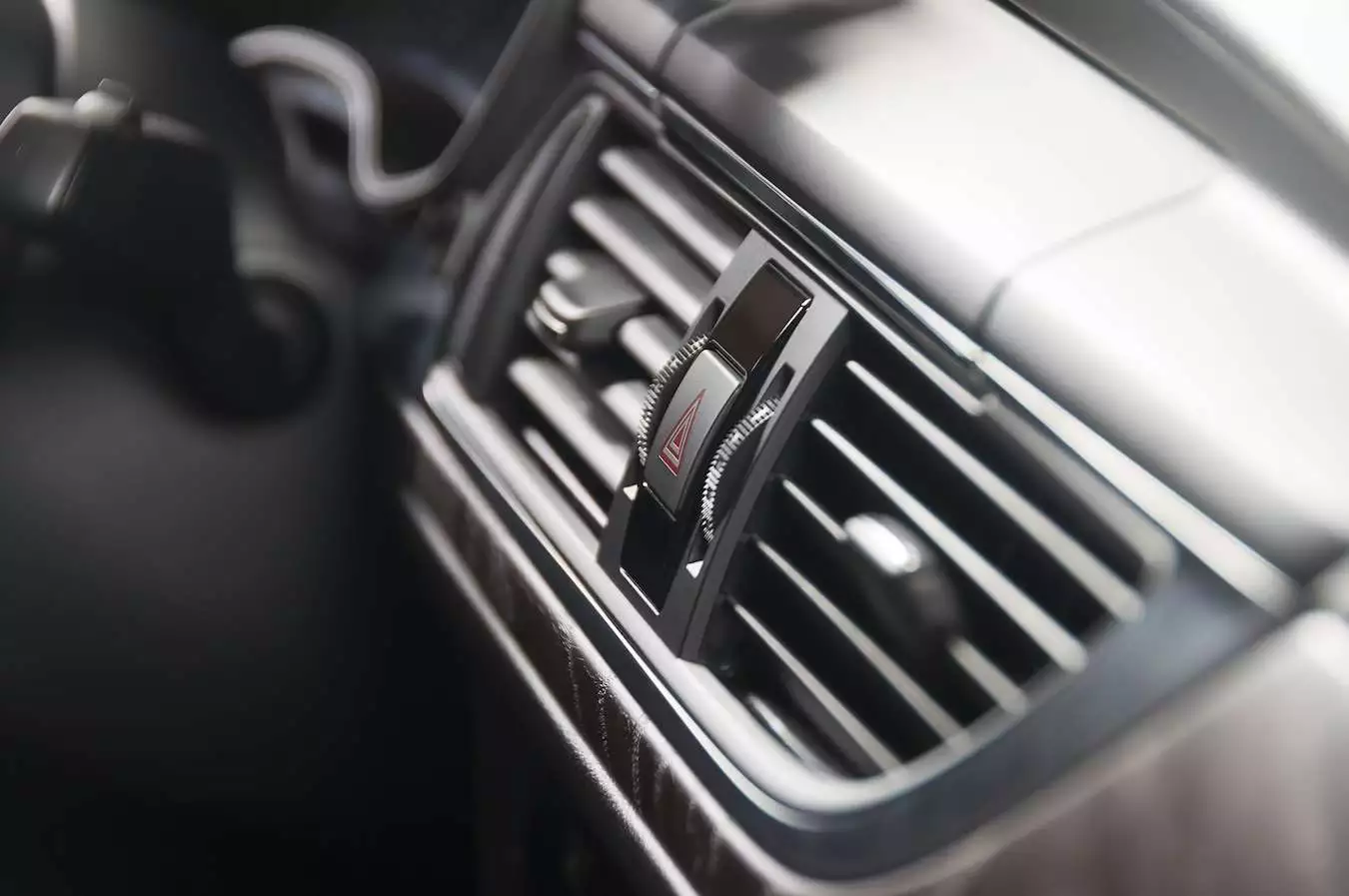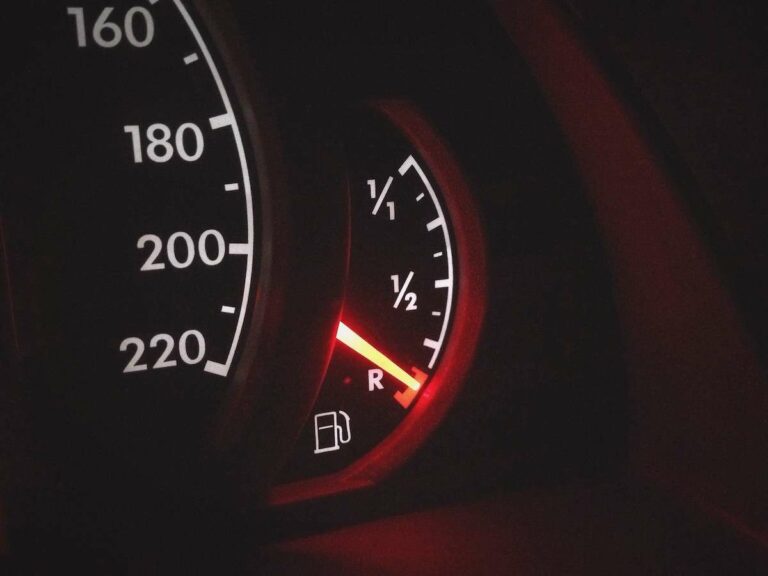Car AC Compressor Turns On And Off? [Meaning & Reasons!]
The AC system for a car is located in the engine and behind the dashboard. The AC compressor is a critical component in the AC system for a car. Today I will explain why a car AC compressor turns on and off and what it means.
As a general rule, the AC compressor turns off when the air inside your car is the temperature you have set the AC to. Or if the AC system is turned off. For example, if the temperature in a car is set to 72°F (22°C), and the temperature gets to 72°F, the AC compressor will turn off.
Interestingly when the AC compressor is not turned on, but the AC system is turned on, a part of the AC compressor will still be rotating 100% of the time.
Below, I will explain how the compressor on an AC system for a car works, how to tell if your AC compressor is bad, and why the AC system for a car turns on and off.
When and Why the A Car AC Compressor Turns On and Off?
On a hot day, if you use the AC, you will set the AC to room temperature or slightly below. By comparison, you will set the temperature slightly above room temperature on a cold day. The AC system for a car works differently depending on whether it needs to cool or heat your car’s cabin.
On a hot day, the temperature inside a car is much hotter than at room temperature. Therefore, the AC system in your car needs to pump cool air into the cabin and suck away hot air.
The AC system will continue to do this until the AC computer detects that the temperature inside the cabin is the same as what the AC is set to.
After that happens, the AC system will turn the AC compressor off. This, in essence, puts the AC compressor in standby mode. The primary functions of the AC compressor are:
- Drawing in refrigerant gas from the compressor and pressuring it
- Pushing out compressed refrigerant gas to the condenser
When the AC system does not need to blow hot or cold air into your car’s cabin, the compressor does not need to run continuously. Therefore, the AC system in your car will turn off. It does this to reduce wear and tear. As well as save the extra fuel that is needed for the AC system to run.
How a Car AC System Warms Up the Cabin of a Car?
On the flip side, when the temperature inside a car’s cabin is cold, and you want to warm it up, a similar thing happens. Except the hot refrigerant is instead pumped into what is called a heater core – not on all cars.
Usually, the hot refrigerant needs to get cooled for the AC to cool your car. But, if it needs to blow hot air to warm your car’s cabin, the hot refrigerant fluid is sent to what is called the heater core.
The heater core is a separate part of a car’s AC system. It has a fan that blows over it. This, in turn, blows hot air into the car’s cabin.
It will continue doing this until the cabin is at the temperature the AC unit is set to. Over time the temperature in a car’s cabin can go down and needs to be heated up again. Once the computer detects that it needs to adjust the temperature inside the cabin again, the AC system turns on the AC compressor again.
How and Why the AC Compressor Is Always On? [Sort Of]
According to Kevin Gainer, an auto mechanic with over 35 years of experience, the AC compressor constantly rotates (source). However, the compressor is not always running. There is a belt that connects the engine to the AC compressor.
But, it’s not engaged until the AC is turned on. While it is ‘technically’ turned on, it’s not doing anything. Here’s a quote from Kevin:
“When you turn the A/C system ‘on,’ a clutch behind the pulley mates the pulley to the compressor itself, and it is ONLY at that point that the compressor turns and begins the vapor-compression cycle that creates cooled air in the passenger compartment.”
This is due to the design of an AC compressor for a car. There is a wheel at the front of the compressor, and it is constantly spinning. When the AC is turned on, a disk behind this spinning disk pushes into it. This engages the spinning disk with the rest of the compressor.
The part of the AC compressor that does this is called the compressor clutch. Interestingly, it functions almost identically to the clutch on the car. When the AC is not running, it’s similar to a car in ‘neutral’ gear.
The engine on a car that is in neutral is still running. But the motor is not engaged and rotates the wheel. Once you put it in gear, the clutch links parts of the drive train together, causing it to rotate the wheels.
Why Does the AC in My Car Turn On and Off?

When the AC in a car is on, you can hear the fan spinning, and after a few seconds, you can feel warm or cold air blowing on you. But, the AC in a car can appear to randomly turn on and off. Also, the amount of time spent on and off can vary, but here’s why this happens.
The car cabin temperature has reached what is set on the AC thermostat, causing the AC to turn off. If the temperature in a car’s cabin gets too hot or cold relative to the temperature you have set the AC to, the AC will turn on to adjust the temperature back up or down.
For example, let’s say it’s a cold day, so the temperature in the car’s cabin is uncomfortably cold. You then set the temperature on your AC to room temperature. The AC will turn on and detect if the temperature is too low relative to what the AC is set to.
It will begin blowing hot air into the cabin. Once the car’s cabin gets to that temperature, the AC is set to the AC will turn off automatically.
How To Tell if Your AC Compressor Is Bad?
If the AC compressor is not working correctly or it has failed, the AC in your car won’t heat or cool your vehicle. The fan may turn on, but the air that comes out won’t be warm or cool. One of the reasons for this is the AC compressor is bad, so here’s how to test if your AC compressor is bad.
To know if your AC compressor is bad, you must test it for electrical continuity. There are three individual components in an AC compressor. The components are the AC compressor clutch, pulley and bearing, and coil. If the AC compressor is not working, one or more of these may have failed and may need replacing.
There are different ways in which you can test each of the components. Here’s a very good video that shows how to inspect and test each of these components:
One thing that isn’t mentioned in the above video is that there are also fuses for the AC compressor. These can be worn out, blown, or partially rusted.
Replacing them can also fix this issue. These fuses are located with all the other fuses for your car in a special compartment. This compartment is almost always located under the bonnet on one side of the engine.
The fuses for your AC unit, and compressor need to tested for electrical continuity using a voltmeter. Here’s a video that shows how to check the fuses on your car:
Why does a Car AC Turns Off After a Few Seconds?
With the AC in your car on, you can hear the fan running and hear when it turns itself on and off again. It’s common for the AC on a car to only turn on for a few seconds and then turn off again, but it can be a bit confusing why this happens.
So, here’s a rundown of what causes the AC on a car to turn and then turn off after a few seconds.
The car cabin temperature is very close to the temperature the AC is set to. For example, the AC is set to 72°F (22°C), and the temperature in the cabin is 72.1°F. The temperature in a car’s cabin will be the correct temperature after only a few seconds.
But, it can also indicate an issue with the fuse for the AC or the wiring is loose or damaged. The thermostat on your AC detects the temperature inside the cabin using sensors.
When the temperature inside your car’s cabin is the same as the temperature you set on your AC unit, it will turn itself off.
The reason is if it continues to blow hot or cold air, the temperature will change from what you’ve set it to. The fact that the AC unit does this reduces wear and tear on the entire AC unit.


![How Much Does a Car AC Leak Repair Cost? [Full Guide!]](https://vehicleuniversity.com/wp-content/uploads/2023/01/asian-automotive-mechanic-with-blue-uniform-explai-2022-01-19-00-18-40-utc-768x512.webp)
![Why Do Deer Run Into Cars? [With Tips to Avoid Them!]](https://vehicleuniversity.com/wp-content/uploads/2023/01/reindeers-crossing-a-road-in-autumn-season-in-finl-2021-08-26-16-01-26-utc-768x576.webp)

![How Many Amps is a Car Battery? [Complete Guide!]](https://vehicleuniversity.com/wp-content/uploads/2023/01/Depositphotos_6733694_XL-768x576.webp)
![Do Cars Have Air Filters? [Here’s Everything to Know!]](https://vehicleuniversity.com/wp-content/uploads/2023/01/hand-hold-dirty-car-air-conditioning-filter-2021-08-30-02-20-32-utc-768x576.webp)
![Difference Between Tire and Wheel? [Complete Guide!]](https://vehicleuniversity.com/wp-content/uploads/2023/01/men-working-in-the-warehouse-with-tires-2022-01-19-00-27-19-utc-768x576.webp)
